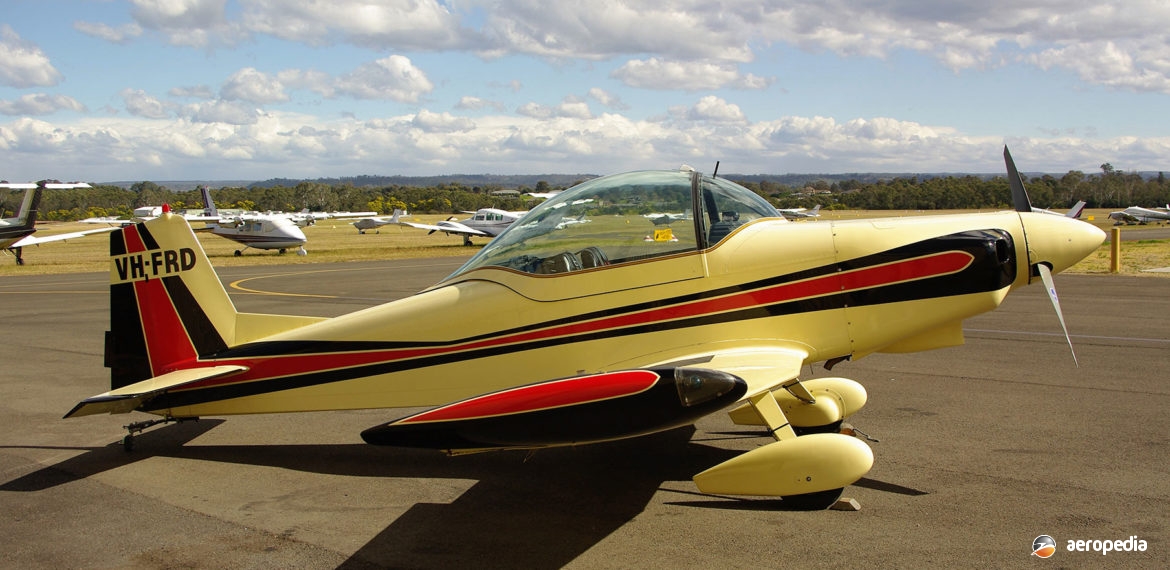Photograph:
Bushby Mustang II VH-FRD (c/n N88) at Camden, NSW in August 2012 (David C Eyre)
Country of origin:
United States of America
Description:
Two-seat light sport monoplane
Power Plant:
One 134 kw (180 hp) Lycoming O-360 four-cylinder horizontally-opposed air-cooled engine
Specifications:
- Wingspan: 7.37 m (24 ft 2 in)
- Length: 5.94 m (19 ft 6 in)
- Height: 1.6 m (5 ft 3 in)
- Wing area: 9.02 m² (97.12 sq ft)
- Max speed at sea level: 354 km/h (220 mph)
- Max cruising speed at 2,285 m (7,500 ft): 338 km/h (210 mph)
- Stalling speed: 92 km/h (57 mph)
- Max rate of climb at sea level: 579 m/min (1,900 ft/min)
- Service ceiling: 7,010 m (23,000 ft)
- Range with standard fuel: 692 km (430 miles)
- Take-off run: 137 m (450 ft)
- Landing run: 183 m (600 ft)
- Fuel capacity: 227 litres (50 Imp gals)
- Empty weight: 454 kg (1,000 lb)
- Loaded weight: 726 kg (1,600 lb)
History:
The Bushby Mustang I was designed by the late David Long and was originally known as the Midget Mustang, being of all-metal construction and flying for the first time in 1948. It took part in the US National Air Races in 1949. Robert Bushby built a Midget Mustang, using drawings, jigs and certain components produced by the designer, and subsequently the type became available to be built by amateur builders by the purchase of plans or in kit form.
Two basic variants of the Mustang I were produced, the MM-1-85 with a 63 kw (85 hp) Continental engine, the first of which flew on 9 September 1959; and the MM-1-125 with a 101 kw (135 hp) Lycoming engine which first flew in July 1963.
Subsequently Mr Bushby designed a two-seat variant of the type known as the Mustang II, the prototype of which flew for the first time on 9 July 1966. Since then more than 1,000 kits have been sold around the world and more than 25 examples have been completed in this region.
The wing of the Mustang II was made in three parts which were of constant chord centre-section, and tapered outer panels. The wing was a two-spar, flush-riveted, stressed-skin aluminium structure with aluminium ailerons and plain trailing-edge flaps. The fuselage was a flush-riveted stressed-skin aluminium monocoque structure. The empennage was a cantilever all-metal structure with a controllable trim tab on the starboard elevator. The standard model had a fixed tailwheel and spring steel main undercarriage, but a tricycle undercarriage could be fitted. Engines normally ranged from 112 kw (150 hp) to 134 kw (180 hp) but engines up to 149 kw (200 hp) could be installed.
A number have been completed in this region under general aviation regulations, one becoming 19-4694 under RAA regulations.

